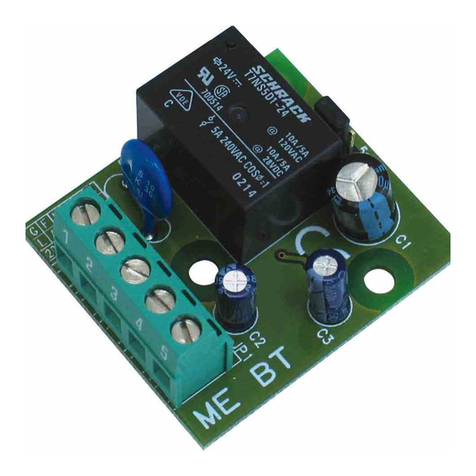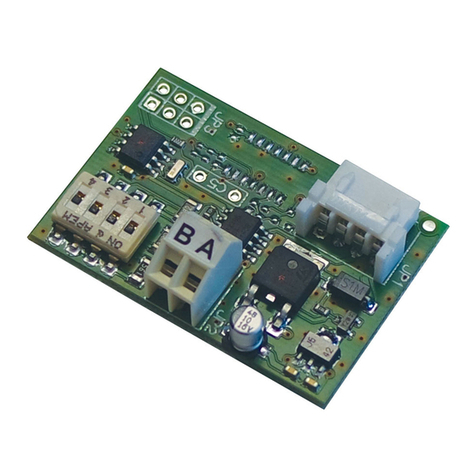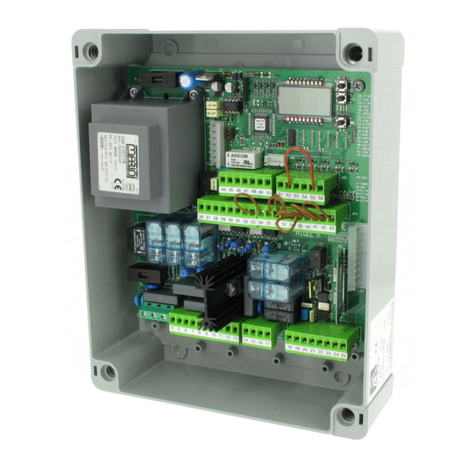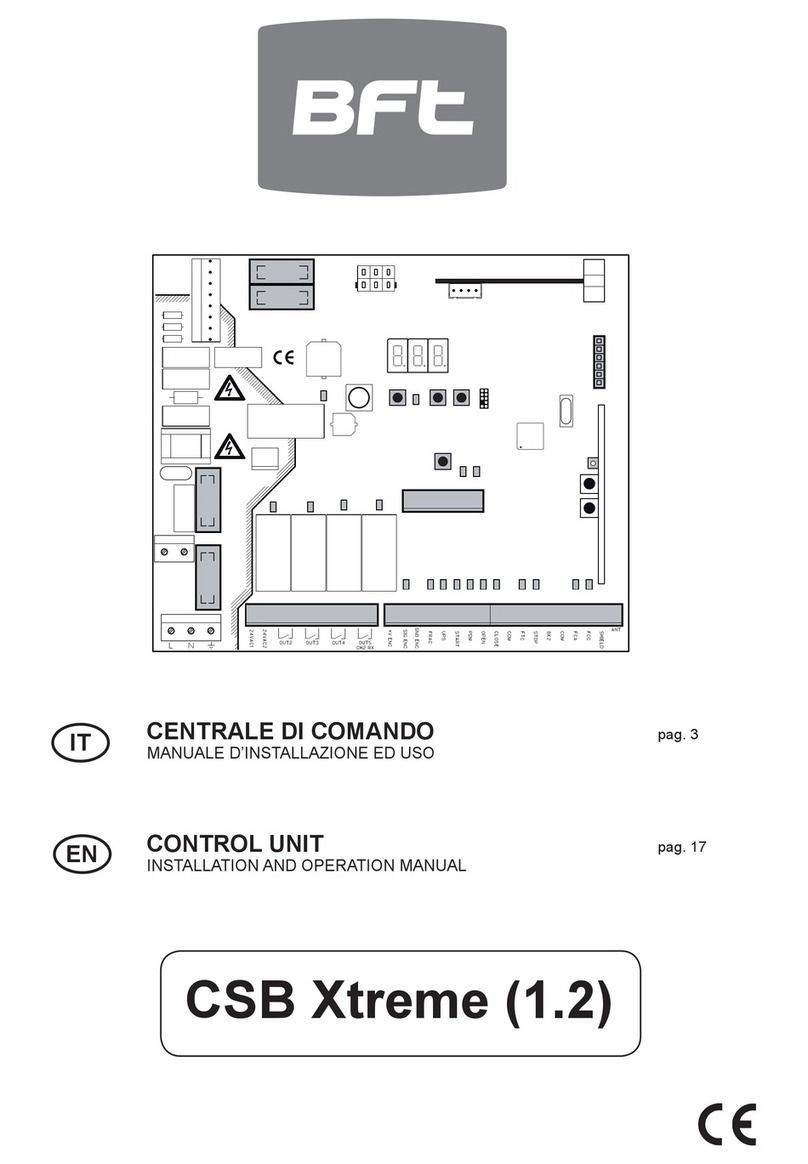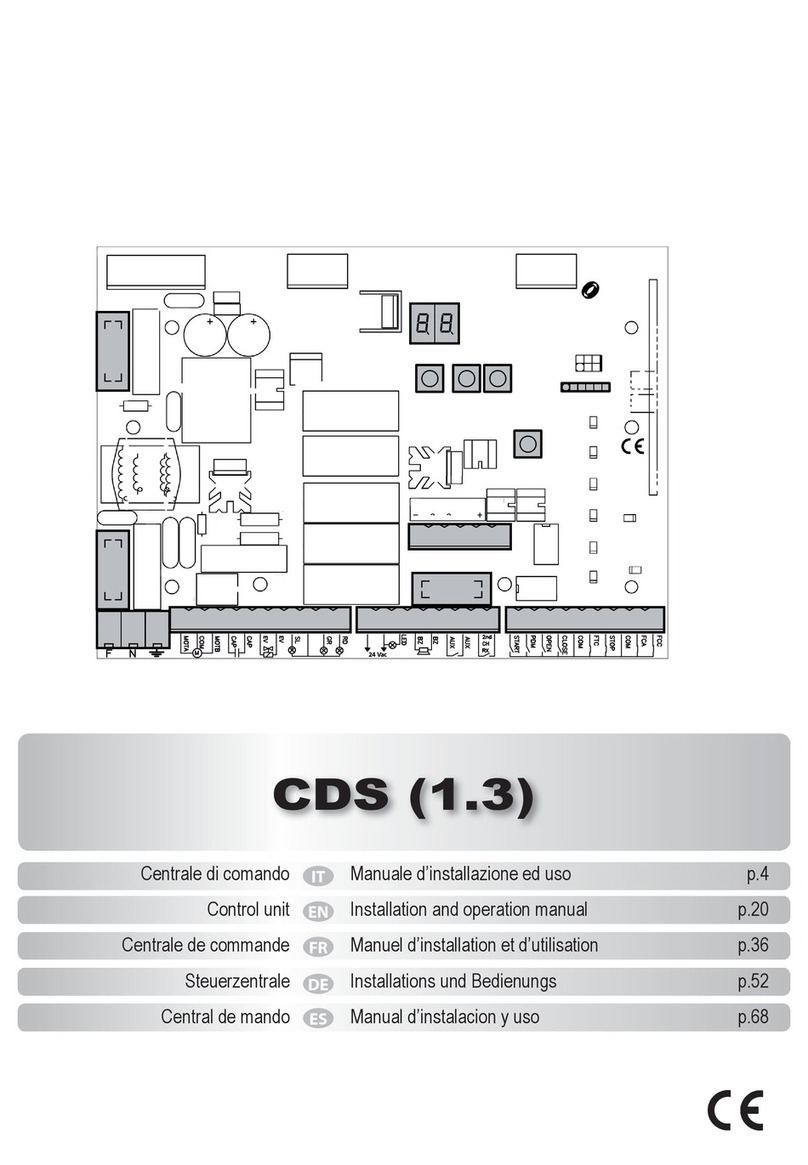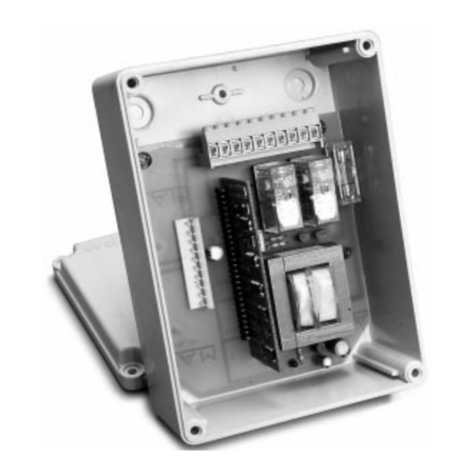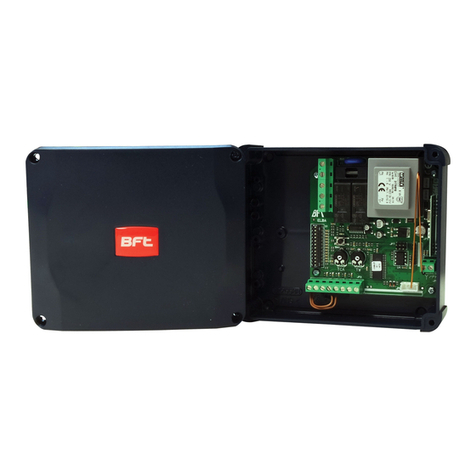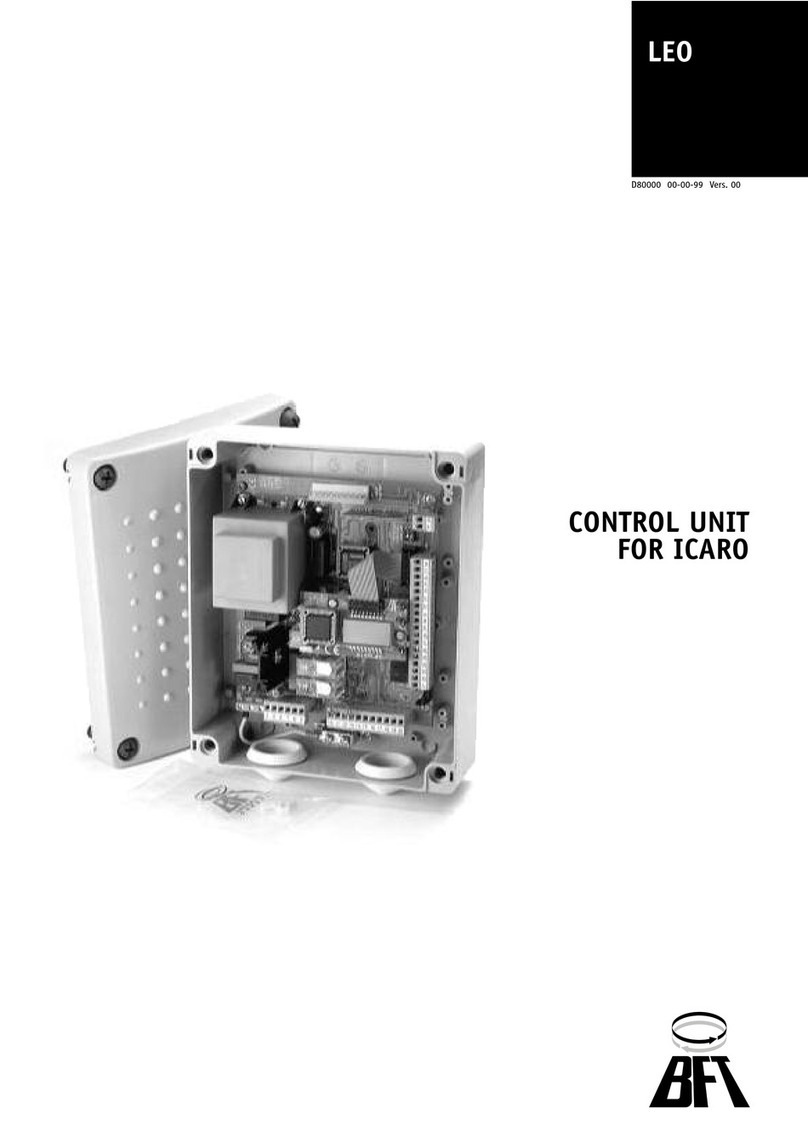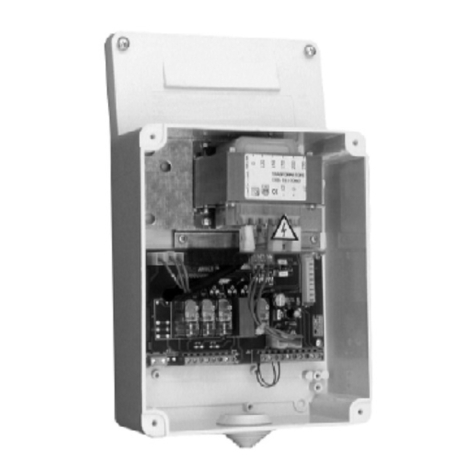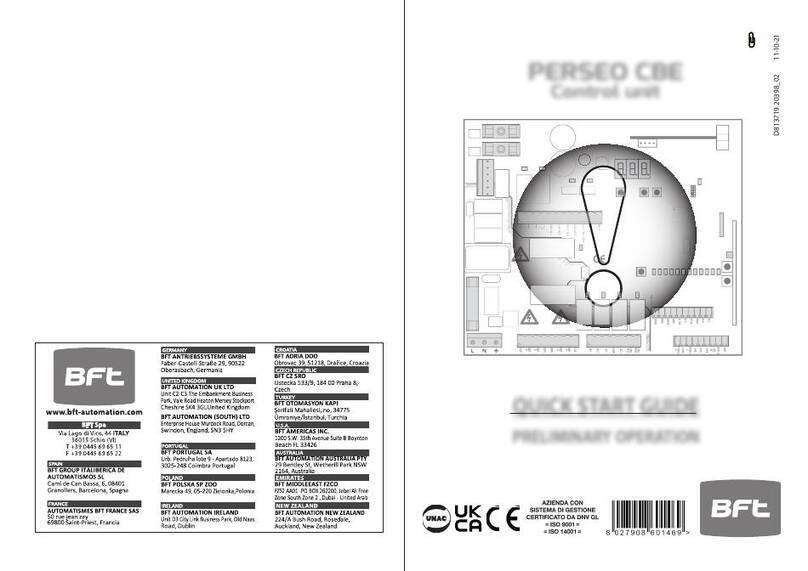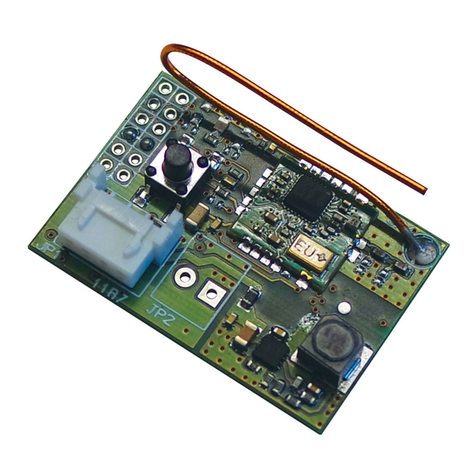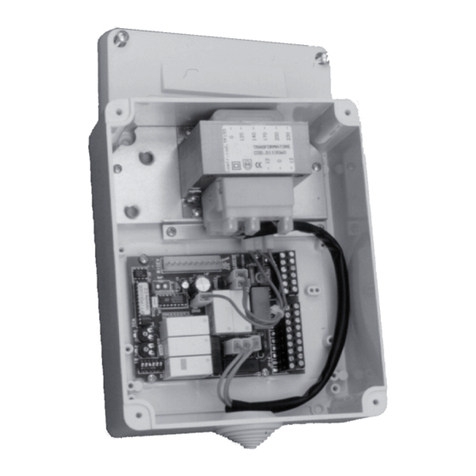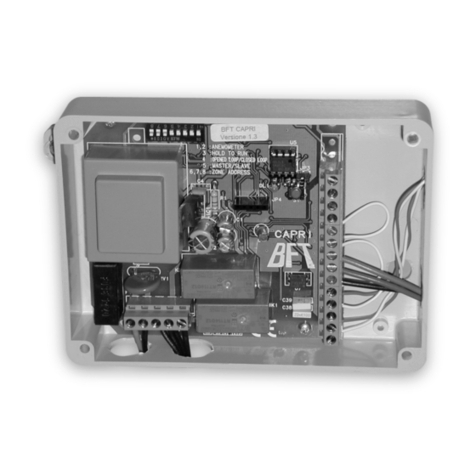3,9
25
4,8
32
3,9
13,5
V1
V3
Fare riferimento al manuale Cellula 130,
Refer to PHOTOCELL 130 manual,
Consultez le Manuel CELLULA 130,
Auf das Handbuch CELLULA 130 Bezug
nehmen,
Consultar el manual CELLULA 130,
Het handboek CELLULA 130
raadplegen.
123
RADIO RADIO RADIO
1
1 2 3
2 3 4
Radiocomando già memorizzato
Radio transmitter already memorised
Radiocommande déjà mémorisée
Bereits gespeicherte Funksteuerung
Radiomando ya memorizado
Reeds gememoriseerde afstandsbediening
Radiocomando già memorizzato
Radio transmitter already memorised
Radiocommande déjà mémorisée
Bereits gespeicherte Funksteuerung
Radiomando ya memorizado
Reeds gememoriseerde afstandsbediening
RADIO RADIO RADIO
Cancellazione in corso
Cancellation in progress
Annulation en cours
Löschvorgang läuft
Cancelación en curso
Cancelamento em curso
Cancellazione effettuata
Cancellation completed
Annulation effectuée
Löschung ist erfolgt
Cancelación efectuada
Cancelamento efectuado
Radiocomando da memorizzare
Radio transmitter to memorise
Radiocommande à mémoriser
Zu speichernde Funksteuerung
Radiomando que memorizar
Te memoriseren afstandsbediening
Radiocomando da memorizzare
Radio transmitter to memorise
Radiocommande à mémoriser
Zu speichernde Funksteuerung
Radiomando que memorizar
Te memoriseren afstandsbediening
10 sec.
Programmazione trasmettitori manuale su
2° canale radio, Manual transmitter
programming on 2nd radio channel,
Programmation manuelle des émetteurs
sur le 2ème canal radio, Manuelle
programmierung Sender auf 2 Funkkanal,
Programación manual transmisores en 2°
canal radio, Handmatige programmering
zenders op 2e radiokanaal.
Programmazione trasmettitori remota,
Remote transmitter
programming, Programmation émetteurs a distance,
Fernprogrammierung der sender, Programacion de
transmisores remota, Programmering op afstand.
Cancellazione trasmettitori, Transmitter
cancellation, Tion émetteurs, Löschen von
sendern, Cancelacion de transmisores,
Annulering zenders.
PROGRAMMAZIONE TRASMETTITORI REMOTA, REMOTE TRANSMITTER PROGRAMMING, PROGRAMMATION ÉMETTEURS A DISTANCE,
FERNPROGRAMMIERUNG DER SENDER, PROGRAMACION DE TRANSMISORES REMOTA, PROGRAMAÇÃO REMOTA DOS TRANSMISSORES.
CANCELLAZIONE TRASMETTITORI,TRANSMITTER CANCELLATION,TION ÉMETTEURS, LÖSCHEN VON SENDERN, CANCELACION DE TRANSMISORES.
"A"
CELLULA130
"B"
MOOVI130
1
3
2
RADIO
RADIO
RADIO
2
1
RADIO
4
3
RADIO
RADIO
SW2
1
3
2
RADIO
RADIO
RADIO
SW2
SW1
SW1 SW2
RADIO
SW1 SW2
RADIO
SW1 SW2
RADIO
Per montaggio colonnine
fare riferimento al
manuale MOOVI 130,
Refer to MOOVI 130
manual for assembly of
stations,
Pour monter les colonnes
consultez le manuel
MOOVI130,
Für die Montage der Säulen
auf das Handbuch MOOVI 130
Bezug nehmen,
Para montar las columnas
consultar el manual
MOOVI 130,
Voor montage kolommen
het handboek MOOVI 130
raadplegen.
Radiocomando già memorizzato
Radio transmitter already memorised
Radiocommande déjà mémorisée
Bereits gespeicherte Funksteuerung
Radiomando ya memorizado
Reeds gememoriseerde afstandsbediening
RADIO
Radiocomando già memorizzato
Radio transmitter already memorised
Radiocommande déjà mémorisée
Bereits gespeicherte Funksteuerung
Radiomando ya memorizado
Reeds gememoriseerde afstandsbediening
Radiocomando da memorizzare
Radio transmitter to memorise
Radiocommande à mémoriser
Zu speichernde Funksteuerung
Radiomando que memorizar
Te memoriseren afstandsbediening
Radiocomando da memorizzare
Radio transmitter to memorise
Radiocommande à mémoriser
Zu speichernde Funksteuerung
Radiomando que memorizar
Te memoriseren afstandsbediening
10 sec.
Cancellazione in corso
Cancellation in progress
Annulation en cours
Löschvorgang läuft
Cancelación en curso
Bezig met annuleren
Cancellazione eettuata
Cancellation completed
Annulation eectuée
Löschung ist erfolgt
Cancelación efectuada
Bezig met annuleren












